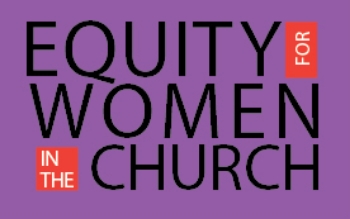Post author Rev. Dr. Eileen Campbell-Reed is an academic entrepreneur. She teaches for Central Seminary, is co-director of the Learning Pastoral Imagination Project, author of Anatomy of a Schism, and founder and host of the Three Minute Ministry Mentor.
When Equity for Women was just forming as an organization in 2013, visionaries Jann Aldredge-Clanton and Sheila Sholes-Ross knew we needed some numbers. For movements to gain traction they need many things: vision, compelling stories, passionate people, and yes, numbers. Yet in 2018, fifty years after the movement for equity in church leadership began, no comprehensive numbers had been available for two decades.*
When I released the State of Clergywomen in the U.S. it filled a 20-year data gap. In 1998 Barbara Brown Zikmund, Adair T. Lummis, and Patricia Mei Yin Chang published the landmark study, Clergy Women: An Uphill Calling, which drew together data and surveyed attitudes from predominantly white denominations. In 2001 Delores Carpenter published A Time for Honor: A Portrait of African American Clergywomen, offering the first comprehensive look at women’s leadership in historic Black churches.
Now we have updated numbers about clergywomen and LGBTIQ clergy. Here are five reasons that having them matters.
1. Numbers help us see the bigger picture.
Changing systems of oppression does not happen all at once and seeing the wide-angle view of growth over time is important for helping people maintain hope and realism about the possibilities for change. In the case of clergywomen there is hope that after fifty years the numbers shifted such that women rose from 2.3% to 20.7% of the ordained clergy in the U.S. Realistically, we still have a long way to go.
2) Numbers are a shorthand to signal growth, yet they cannot tell the full story of bias.
Growth can by no means be measured solely by numbers. Yet numbers are one of the measures that communicate like shorthand when it comes to social change. People who are committed to access and equity in the church for women, as well as lesbian, gay, bisexual, trans, intersex and queer (LGBTIQ) members and clergy, know that low numbers can signal a lack of active, open acceptance. And we also know that higher numbers of women do not tell the whole story of change because implicit bias remains at work even when the numbers approach or reach equity.
For example, the United Church of Christ (UCC) numbers of clergywomen are approaching parity. Women are half the clergy in the UCC and 38% of the pastors. When I shared this data with several women I met at the National Council of Churches gathering last Autumn, they scoffed. One of them told me that her daughter is a UCC pastor, yet she has struggled to find a pastoral call, and she has served in situations far from ideal. This story is repeated in every denomination.
3) Numbers give evidence that someone is attending to the data of a movement.
Women called to ministry over the last five decades are busy transcending the limits of the church through innovation, creativity, and entrepreneurship. They try out new roles and reach out to new groups. This collaborative partnership with the Spirit does not always leave much time for attending to the movement as a movement, much less, gathering data. Thankfully, some Equity leaders have paid attention to data in the movement: For example see the research conducted by Martha Simmons and Courtney Pace, featured in the report.
Whether clergywomen and LGBTIQ clergy are energized by transforming structures and infiltrating patriarchal and complementarian systems to embody change, or stepping outside those limits, it is encouraging feedback to see how the change looks. And what the numbers tell us right now is that a change is working, although far from realized.
4) Numbers provide a clue about what more needs to be done in terms of research.
We need more than numbers to understand the ways that systems of domination continue to undermine the calling and gifts of women and LGBTIQ clergy. One kind of research we need for sure is more qualitative studies of clergy in general and clergywomen in particular. Qualitative studies are expensive and take time to gather longitudinal data, yet they are essential for digging deeper into the numbers associated with change. Even large-scale quantitative research demands collaboration and coordination that is beyond a single researcher.
5) Numbers offer points of comparison.
When trying to parse out the meanings and dynamics of change some insight can come from comparing the experiences of women to men who have dominated the profession of ministry for centuries. Often questions rather than insights arise from comparisons. For example, when we note that women of color are going to seminary in greater numbers, and the numbers of white women attending seminary is dropping precipitously, we are left to wonder: what factors are at work in these trends?
Another point of comparison and contrast comes when we ask: Why are some denominations making greater strides toward equity than others? What is at stake theologically and/or socially in different denominational groups? When updating the statistics for the 2018 report, we included more groups than were part of the original data to add more comparison points. The State of Clergywomen in the U.S. added these to Zikmund, et. al.’s original list: African Methodist Episcopal, many varieties of Baptist groups, the Foursquare Church, the Mennonite Church, and the Reformed Church in America.
To read the newly collected numbers, sign up to download your copy of the State of Clergywomen in the U.S: 2018 Statistical Report by visiting stateofclergywomen.org. To update the numbers for your denomination, please visit our feedback page.
* In 2012, I updated some of the mainline numbers in this article: “Baptists in Tension.”



